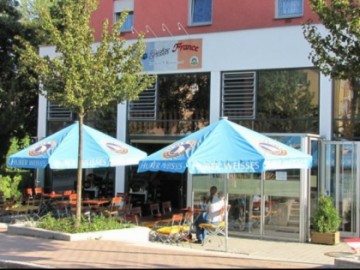Freising Beer and Again Beer
The best beer in the country ... This is the important thing you should know about Freising - a small town with the world’s oldest brewery! It boasts the incredibly rich history of beer and its varieties that worth trying here.
Cafes, bars and restaurants in Freising
See all
Restaurants

Cooking Asia
Restaurant
+49 8161 9896585
Payment methods:

Hofbrauhaus-Keller
Restaurant • Brewery • Biergarten
+49 8161 938800
Payment methods:

La Petite France
Restaurant
+49 8161 9353318
Payment methods:

Parkcafé
Biergarten • Café • Catering
+49 8161 5585
Payment methods:
All sights in FreisingSee all
Landmarks in the city Freising
Nearby










 Parks and recreation
Parks and recreation
 Architectural Monuments
Architectural Monuments
 Other places
Other places


